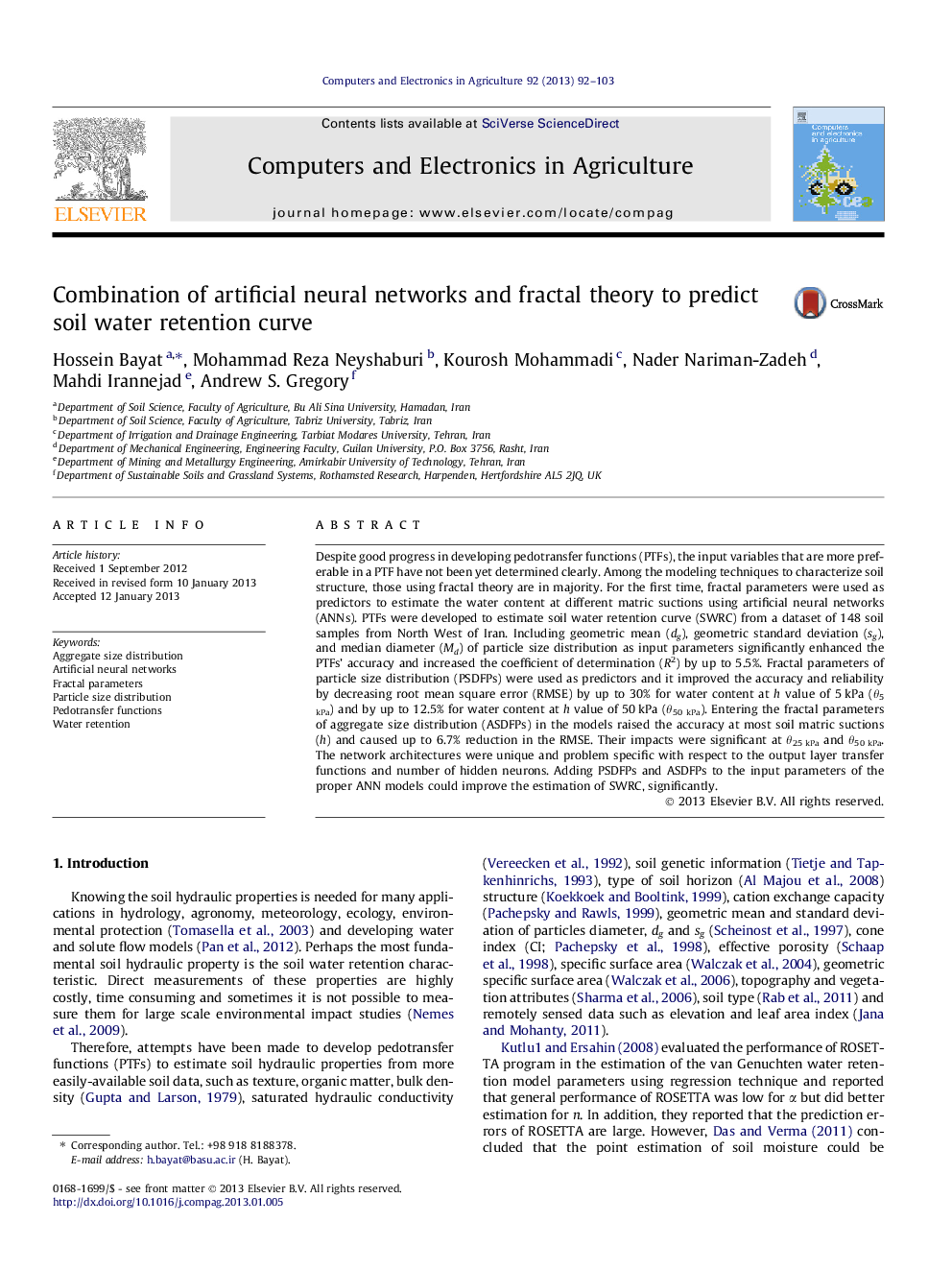| Article ID | Journal | Published Year | Pages | File Type |
|---|---|---|---|---|
| 84372 | Computers and Electronics in Agriculture | 2013 | 12 Pages |
Despite good progress in developing pedotransfer functions (PTFs), the input variables that are more preferable in a PTF have not been yet determined clearly. Among the modeling techniques to characterize soil structure, those using fractal theory are in majority. For the first time, fractal parameters were used as predictors to estimate the water content at different matric suctions using artificial neural networks (ANNs). PTFs were developed to estimate soil water retention curve (SWRC) from a dataset of 148 soil samples from North West of Iran. Including geometric mean (dg), geometric standard deviation (sg), and median diameter (Md) of particle size distribution as input parameters significantly enhanced the PTFs’ accuracy and increased the coefficient of determination (R2) by up to 5.5%. Fractal parameters of particle size distribution (PSDFPs) were used as predictors and it improved the accuracy and reliability by decreasing root mean square error (RMSE) by up to 30% for water content at h value of 5 kPa (θ5 kPa) and by up to 12.5% for water content at h value of 50 kPa (θ50 kPa). Entering the fractal parameters of aggregate size distribution (ASDFPs) in the models raised the accuracy at most soil matric suctions (h) and caused up to 6.7% reduction in the RMSE. Their impacts were significant at θ25 kPa and θ50 kPa. The network architectures were unique and problem specific with respect to the output layer transfer functions and number of hidden neurons. Adding PSDFPs and ASDFPs to the input parameters of the proper ANN models could improve the estimation of SWRC, significantly.
► Using PSDFPs as predictors improved the performance of all PTFs. ► Using ASDFPs in the PTFs increased the accuracy of most of PTFs. ► The network architectures of PTFs are unique at each matric suctions (h). ► Using PSDFPs and ASDFPs as predictors would be useful to estimate the SWRC.
